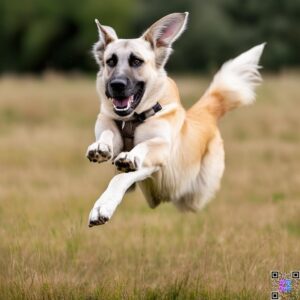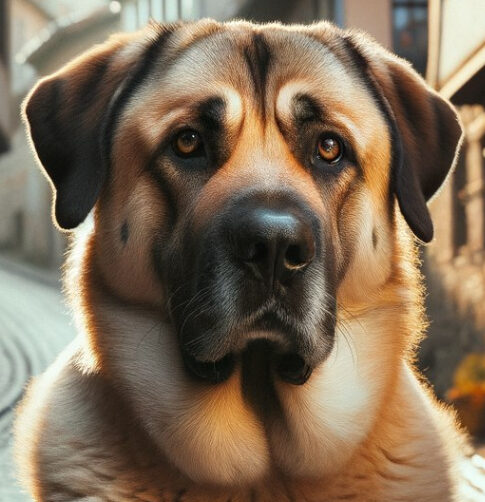Introduction
If you’re the proud owner of a 2 year old Anatolian Shepherd, you’re in for a rewarding journey filled with loyalty, intelligence, and a touch of independence. This remarkable breed, known for its impressive size and protective instincts, has a rich history that dates back thousands of years. As your Anatolian Shepherd matures, understanding its unique needs and characteristics becomes essential for fostering a healthy and happy life together. In this guide, we’ll explore everything from the breed’s origins to training tips, health considerations, and more.
Understanding the Anatolian Shepherd

The Anatolian Shepherd is not just another dog breed; it’s a living testament to the bond between humans and canines throughout history. Originating from the Anatolian region of Turkey, these dogs were primarily bred to guard livestock against predators. Their impressive size, strength, and keen instincts make them exceptional guardians.
Origin and History
The history of the Anatolian Shepherd is steeped in tradition. These dogs have been utilized for centuries as protectors of sheep and goats, showcasing their natural guarding abilities. Artifacts from as far back as 2000 B.C. depict dogs resembling the Anatolian Shepherd, highlighting their long-standing relationship with humans. This breed’s journey to the United States began in the mid-20th century when they were introduced for agricultural purposes, quickly gaining recognition for their effectiveness in protecting livestock.
Physical Characteristics
A 2 year old Anatolian Shepherd typically weighs between 90 to 150 pounds, depending on its gender and genetics. They possess a sturdy build with a broad head and muscular body, exuding strength and confidence. Their coat is double-layered, providing insulation against harsh weather, and comes in various colors, including fawn, brindle, and white. Understanding these physical traits is crucial when considering grooming and care routines.
Temperament and Behavior
Anatolian Shepherds are known for their loyalty and protective nature. They are independent thinkers, often requiring a firm but gentle hand in training. At two years old, your Anatolian is likely to be more assertive and confident, making socialization and obedience training essential. These dogs are naturally suspicious of strangers, which is a trait that can be managed with proper training and exposure to various environments. The Life of a 2 Year Old Anatolian Shepherd As your Anatolian Shepherd reaches the age of two, it undergoes significant developmental changes. Understanding these milestones can help you provide the best care and training.
Developmental Milestones
By the age of two, your Anatolian Shepherd is nearing its full physical maturity, although it may continue to develop emotionally and behaviorally for another year or two. This stage is critical for reinforcing training and establishing boundaries, as the dog may test limits more frequently. Regular training sessions and consistent routines will aid in maintaining good behavior.
Health Considerations
Health is a top priority for any dog owner. At two years old, Anatolian Shepherds are generally healthy but are still susceptible to certain genetic conditions, such as hip dysplasia and hypothyroidism. Regular veterinary check-ups are essential to monitor their health and catch any potential issues early on.
Exercise Requirements
Anatolian Shepherds are active dogs that require regular exercise to stay healthy and happy. Daily walks, playtime, and mental stimulation through training or puzzle toys are vital. At two years old, your dog will have plenty of energy, so ensuring they have adequate physical activity is key to preventing behavioral issues.
Common Health Issues in Anatolian Shepherds Like all breeds, Anatolian Shepherds can face specific health challenges. Understanding these can help you provide better care.
Genetic Conditions
Anatolian Shepherds are predisposed to certain genetic conditions, including hip and elbow dysplasia. Regular veterinary check-ups and maintaining a healthy weight can help minimize the risk of these issues. Additionally, be aware of signs of hypothyroidism, such as weight gain and lethargy, and consult your vet if you notice any changes.
Preventative Care
Preventative care is vital for ensuring the long-term health of your Anatolian Shepherd. Regular vaccinations, parasite control, and dental care should be part of your routine. Establishing a good relationship with your veterinarian will help you stay informed about your dog’s health needs.
The Role of Anatolian Shepherds in Modern Society Anatolian Shepherds continue to play a significant role in various aspects of modern life.
Working Dogs and Livestock Guardian Roles
These dogs excel as livestock guardians, protecting herds from predators such as wolves and coyotes. Their natural instincts and protective nature make them invaluable assets to farmers and ranchers. They work independently, often patrolling large areas to ensure the safety of their charges.
Contributions to Conservation Efforts
Anatolian Shepherds have also contributed to wildlife conservation efforts. In Namibia, they are used to protect livestock from cheetahs, reducing the need for ranchers to harm these endangered animals. This innovative approach has proven successful in maintaining ecological balance while supporting local agriculture.
Characteristics of a 2 Year Old Anatolian Shepherd
- Physical Traits: At two years old, the physical characteristics of an Anatolian Shepherd become more pronounced. They possess a muscular frame with strong legs designed for endurance. Their large head features distinctive drop ears and expressive eyes that can convey their emotions effectively.
- Temperament and Behavior: The temperament of a two-year-old Anatolian Shepherd can vary based on individual experiences and training. Generally, they are known to be intelligent and capable dogs that require mental stimulation. Without proper engagement, they may become bored or develop undesirable behaviors.
- Health Considerations: Regular health check-ups are essential for maintaining the well-being of your dog. Vaccinations should be up-to-date, and routine screenings can help identify any potential health issues early on.
Training a 2 Year Old Anatolian Shepherd
Training is crucial for any dog breed but becomes particularly important with an independent breed like the Anatolian Shepherd. At two years old, they have likely developed some habits—both good and bad—so it’s essential to reinforce positive behaviors while correcting unwanted ones.
- Basic Commands and Obedience Training: Start with fundamental commands such as “sit,” “stay,” “come,” and “leave it.” Consistency is key; use positive reinforcement techniques like treats or praise to encourage compliance.
- Socialization Needs: Expose your dog to various environments, people, and other animals to help them become well-adjusted adults. This exposure reduces anxiety in new situations and helps them learn appropriate behaviors.
- Advanced Training Techniques: Once basic commands are mastered, consider advanced training options such as agility courses or scent work to keep your dog mentally stimulated.
Nutrition for a 2 Year Old Anatolian Shepherd
Proper nutrition plays an integral role in maintaining your dog’s health at this stage of life. A balanced diet ensures they receive the necessary nutrients for energy, growth, and overall well-being. Feeding your Anatolian Shepherd a balanced diet is crucial for maintaining their health. High-quality dog food that meets their nutritional needs will support their active lifestyle. It’s essential to monitor their weight and adjust portions as necessary, especially since this breed can be prone to obesity.
- Dietary Requirements: A high-quality dog food formulated for large breeds is recommended due to their size and energy levels. Look for options rich in protein from real meat sources.
- Recommended Food Types: Consult your veterinarian for specific recommendations based on your dog’s activity level and health status. Some owners prefer grain-free diets or raw feeding options; however, it’s essential to ensure these diets meet all nutritional needs.
- Treats and Supplements: Use treats sparingly during training sessions to avoid overfeeding. Supplements like omega fatty acids can support skin health and joint function.
Exercise and Activity Needs of a 2 Year Old Anatolian Shepherd
Anatolian Shepherds are active dogs that require regular exercise to maintain physical health and mental sharpness.
- Daily Exercise Routines: Aim for at least one hour of exercise each day through walks, playtime in the yard, or interactive games that engage both body and mind.
- Mental Stimulation Activities: Incorporate puzzle toys or training sessions into your routine to challenge your dog’s intellect. These activities help prevent boredom-related behaviors such as digging or excessive barking.
Grooming and Care for a 2 Year Old Anatolian Shepherd
Grooming is an essential aspect of caring for your dog that contributes not only to their appearance but also to their health. Anatolian Shepherds have a double coat that requires regular grooming. During shedding seasons, which occur twice a year, daily brushing is recommended to manage loose fur. Outside of shedding periods, weekly brushing suffices. Bathing should be infrequent, as their coat naturally repels dirt and odors.
- Grooming Essentials: Regular brushing helps manage shedding while keeping their coat healthy. Depending on the season, you may need to adjust grooming frequency.
- Bathing and Coat Care: Bathe your dog only when necessary to avoid stripping natural oils from their coat. Use dog-specific shampoos designed for sensitive skin if needed.
Living with a 2 Year Old Anatolian Shepherd
Understanding how this breed fits into family life is crucial for potential owners considering adding an Anatolian Shepherd to their home.
- Compatibility with Families: These dogs can be excellent family pets when properly trained. They often form strong bonds with children but should always be supervised during interactions due to their size.
- Interaction with Other Pets: Early socialization helps foster positive relationships with other pets in the household. However, introductions should be managed carefully due to their protective instincts.
Common Issues with 2 Year Old Anatolian Shepherds
Like any breed, there can be challenges when raising an Anatolian Shepherd at this age.
- Behavioral Problems: Some common issues include stubbornness or excessive barking if not properly trained or stimulated. Address these behaviors early through consistent training methods.
- Health Issues to Watch For: Be vigilant about signs of discomfort or changes in behavior that could indicate underlying health problems such as joint pain or digestive issues.

FAQs
1- What is the temperament of a 2 year old Anatolian Shepherd?
A 2 year old Anatolian Shepherd typically exhibits a loyal and protective temperament. They are independent and may be wary of strangers, making socialization essential.
2- How much exercise does a 2 year old Anatolian Shepherd need?
Anatolian Shepherds require at least an hour of exercise daily, including walks, playtime, and mental stimulation to keep them happy and healthy.
3- What are the grooming requirements for this breed?
Grooming should include regular brushing, especially during shedding seasons. Baths are rarely needed, as their coat is naturally odor-resistant.
4- Are Anatolian Shepherds good with children?
With proper socialization, Anatolian Shepherds can be good with children, but supervision is necessary due to their large size and protective instincts.
5- How do I train my 2 year old Anatolian Shepherd?
Training should focus on positive reinforcement techniques and consistent routines. Early socialization is crucial to help them adapt to various environments.
6- What should I feed my 2 year old Anatolian Shepherd?
A balanced diet of high-quality dog food tailored to their size and activity level is essential for maintaining their health.
Conclusion
Owning a 2 year old Anatolian Shepherd is a fulfilling experience that comes with unique challenges and rewards. By understanding their needs and characteristics, you can ensure a happy, healthy life for your furry companion. From training and socialization to health care and exercise, being proactive in your approach will help you build a strong bond with your Anatolian Shepherd, allowing both of you to thrive together.

